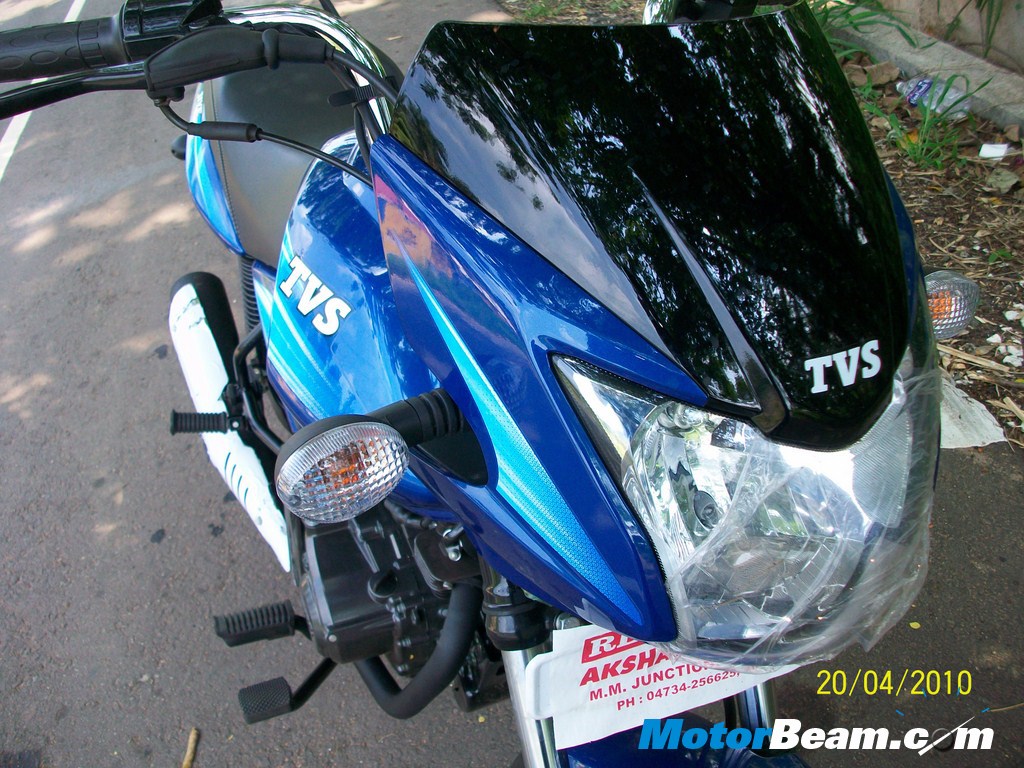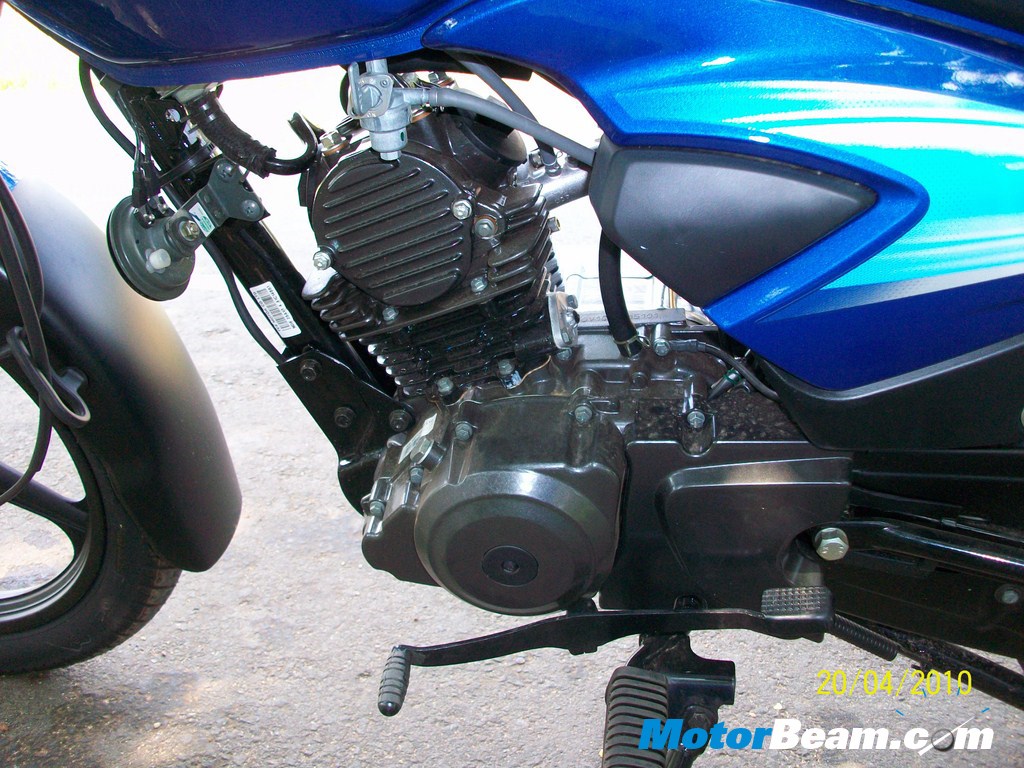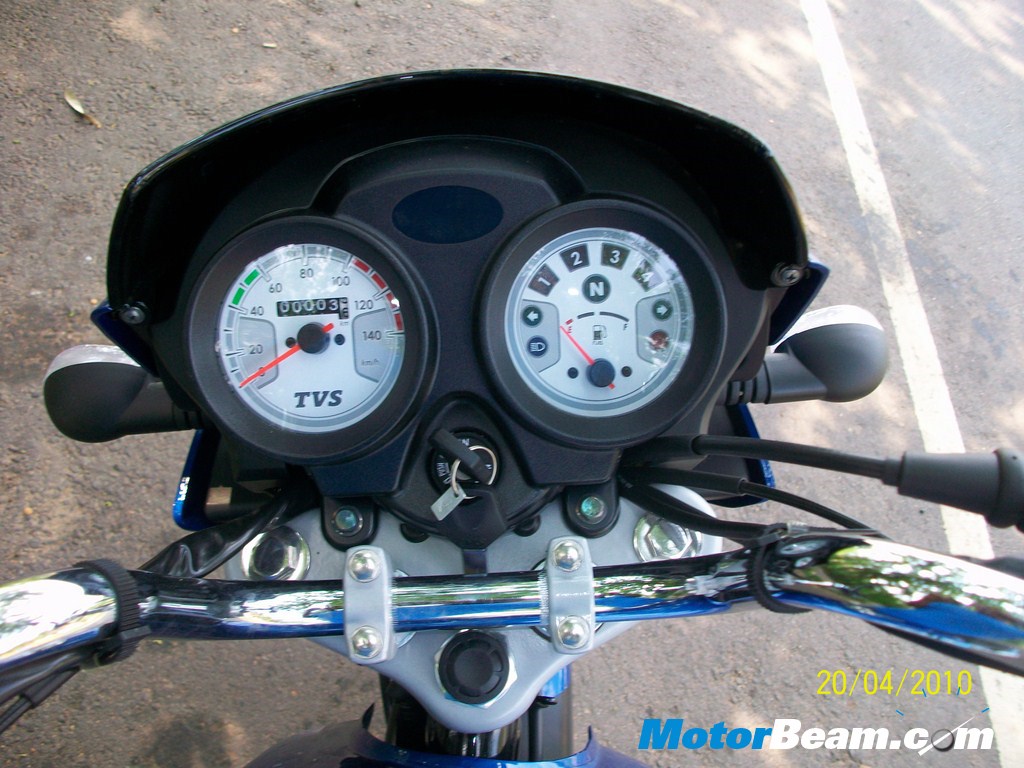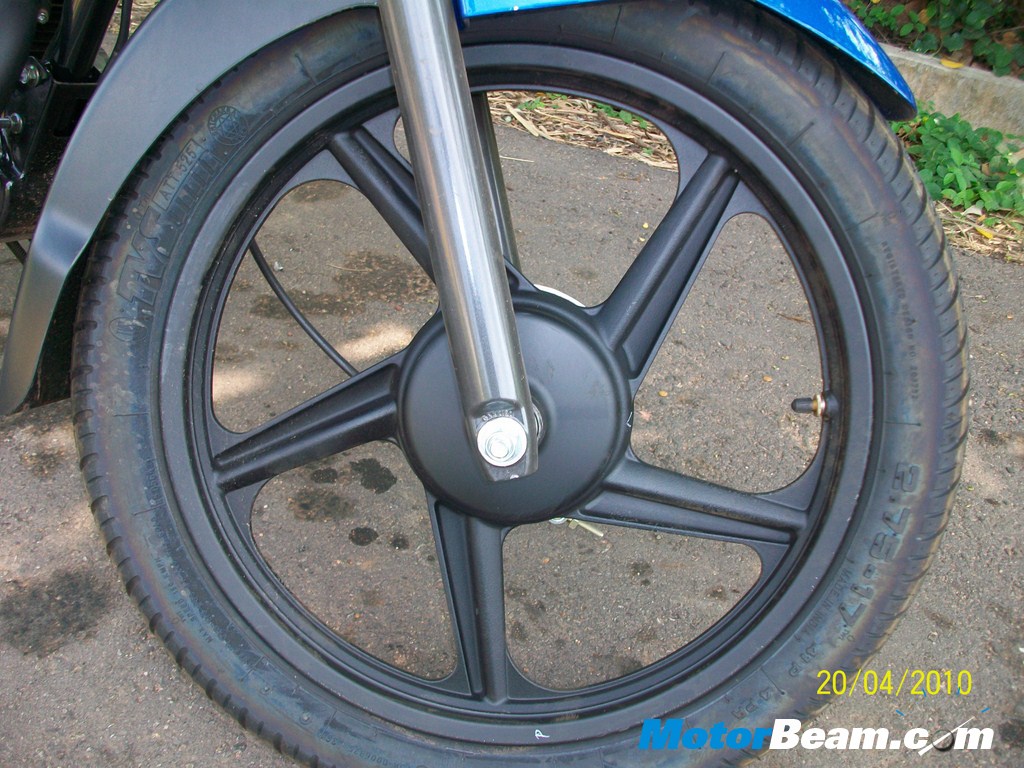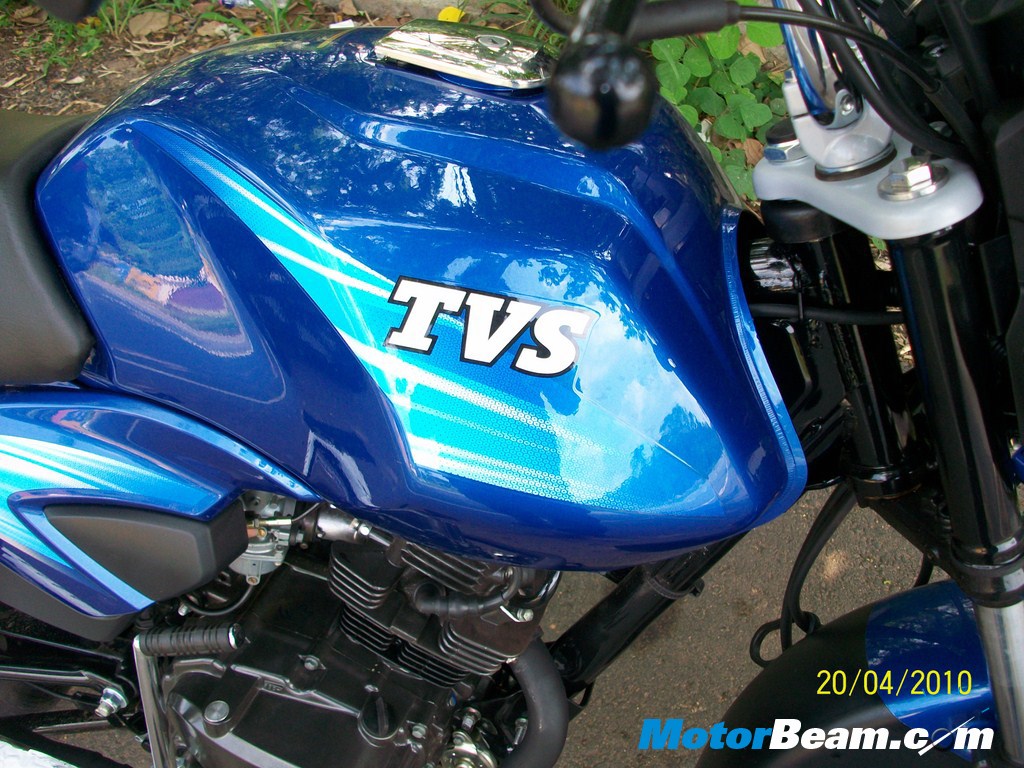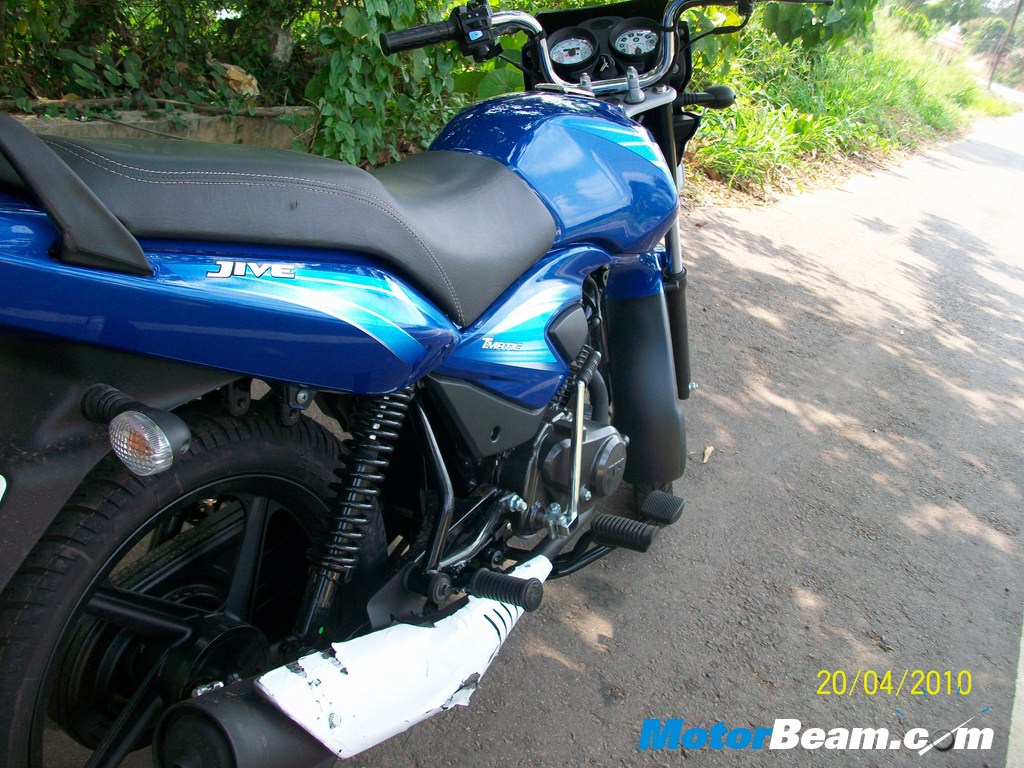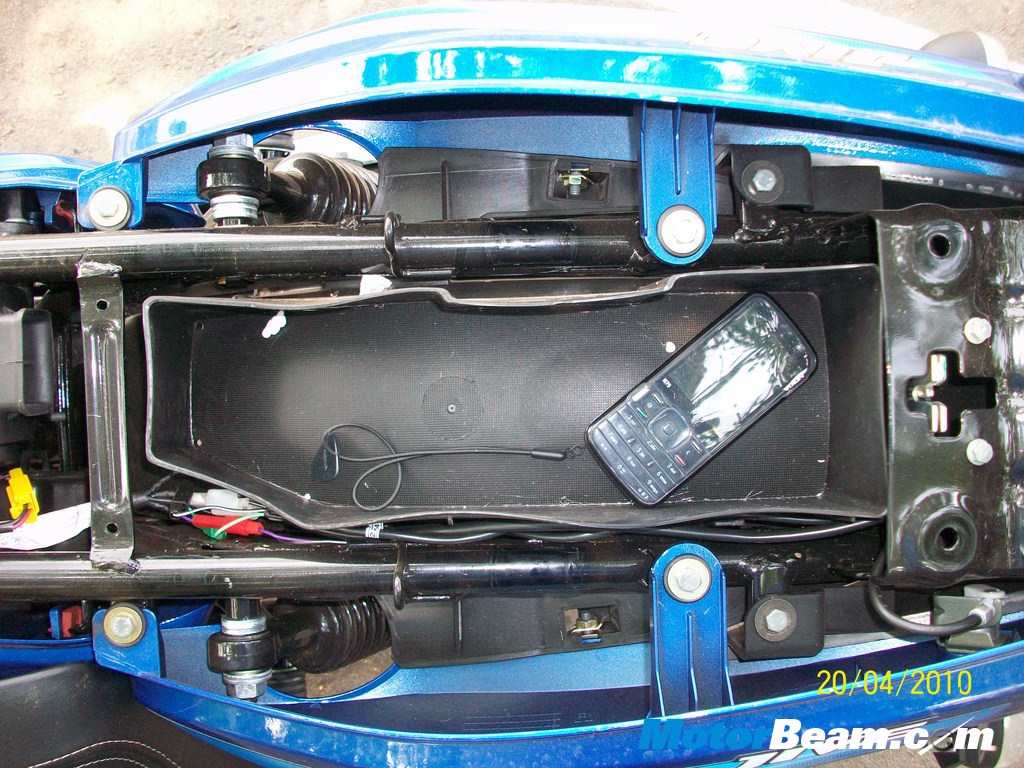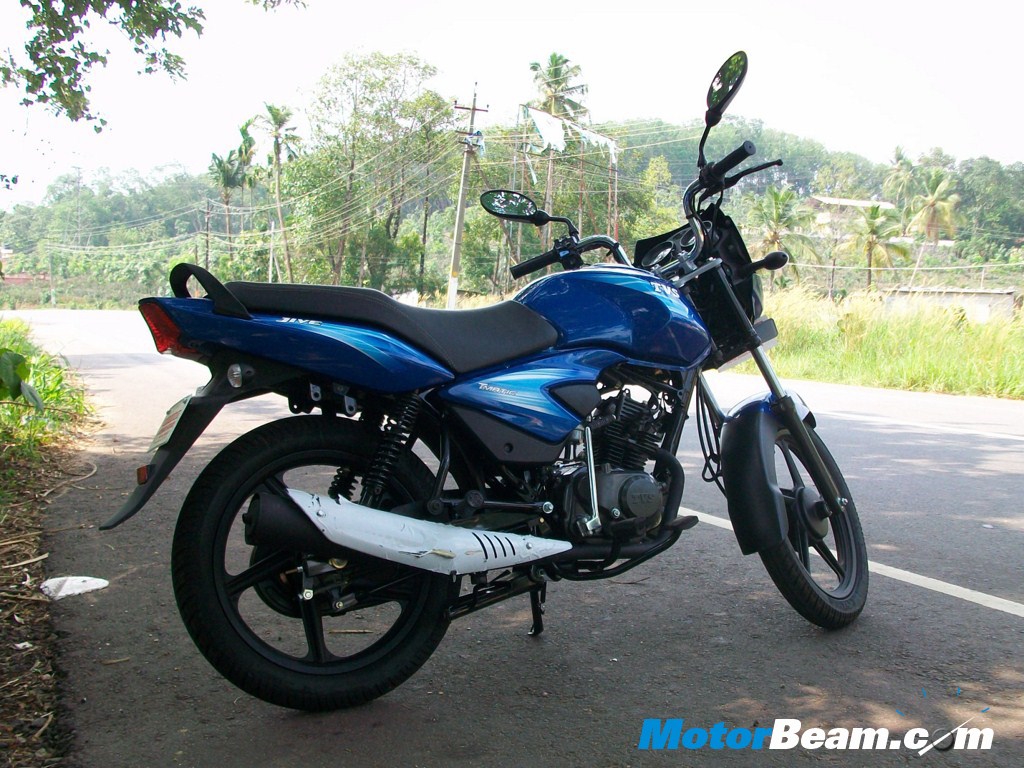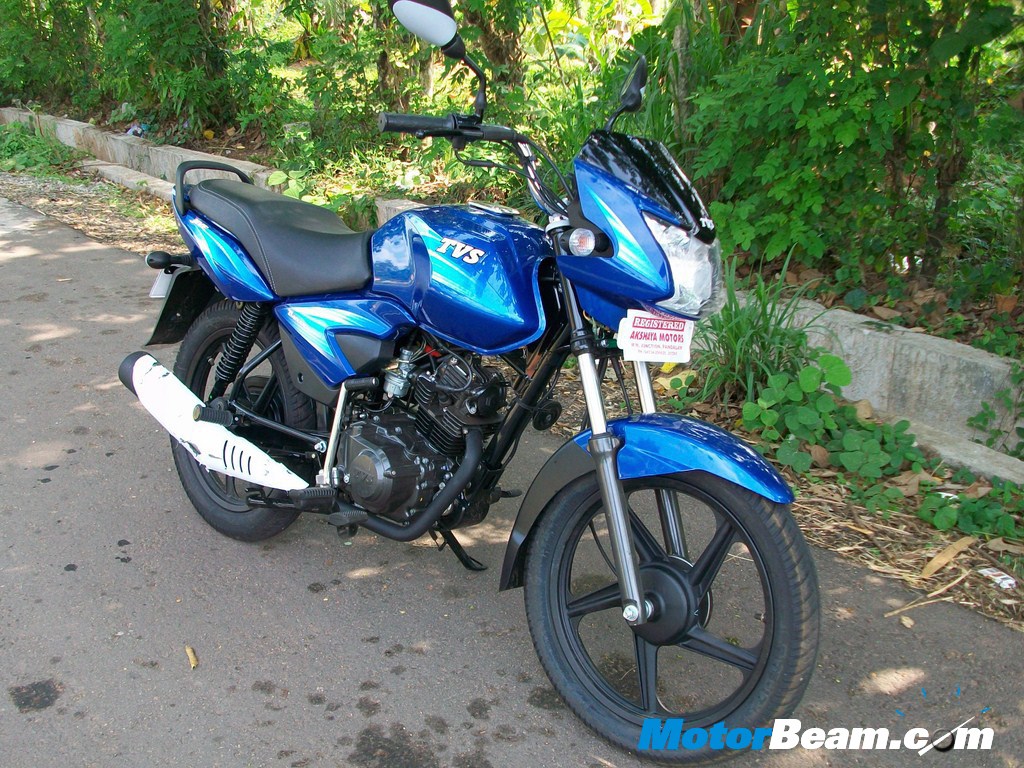
Bike tested: 2010 TVS Jive
Price OTR Mumbai: Rs. 46,500/-
It doesn’t take a lot to figure out that the 100 – 110 cc bike segment is a bit crowded, every other manufacturer has an offering in this segment and recent trends have started to show signs of a refreshing change. Manufacturers seem to have discovered that, in order to stand out from the crowd, their products need to be different. This is particularly evident in the launch two recent bikes that have managed to do just that, the TVS Jive and the Honda CB Twister. We take a close look at the TVS Jive, and find out what the machine is all about.
For starters, this bike is meant for those who would like a scooter-like driveability with bike-like mileage and handling. It’s a simple concept, blending together the best of both worlds. We were very curious to find out how it works and what might be the niggles that come along with it. The Jive was initially launched along with the Wego and is among TVS’s new generation of bikes packed with technologies straight from its own Research and Development department. Priced just like an average 100 – 110cc bike and marketed straight to the point, this little machine has received quite some attention to the spot that even the shares of TVS went up slightly when the news of this bike’s launch were out in the wild.
Looks and Features
Through the photos of the bike, one simply feels that it isn’t something that could stand out from the crowd, even in person, the looks are just typical for a 100cc segment bike, nothing out of the ordinary here, but, we do like the way it has been designed with care thanks to its nicely done stickers across the body and its well designed headlamp, the bright blue color was also something positive.
On the features side, the TVS Jive had a few tricks up its sleeve, firstly, it does not have the clutch lever, instead, the lever is somewhat mated to the gear shift lever so that every time its pressed down or up, the clutch engages, so In effect, for a smooth gear shift while in motion, the gear lever has to be gently pressed and released, which is easy since the lever has ample travel and resistance both down and up, but there is more to it, TVS has managed to sprinkle a bit of refinement into this system, as an example, it’s impossible to stall the bike, 4th gear at 5kmph, the engines running and the bike is moving without any intervention just like a scooter, they call it, the ‘Auto Clutch’, as an end result, the bike can start off and stop in any gear and can never be stalled. Another really cool feature was the order of the gears, it goes from 1st – 2nd – 3rd – 4th- Neutral – 1st – 2nd – 3rd – 4th, the same in reverse which means in fourth gear, if you press down on the gear shift, it goes into neutral if the bike is stationary, TVS likes to call this system, the Rotory Gear, they have also fixed a gear indicator that shows which gear the bike is in just like on the Suzuki Zeus. It’s these three key additions that makes the Jive really impressive, the Auto Clutch, the Rotory Gear and the Gear Indicator, all of them work seamlessly and can really take the headache out of those people who commute a lot through crowded and traffic covered roads.
There are also certain things worth noting on the bike such as the placement of all switches except the starter switch on the left hand stalk, presumably to keep the left hand busy due to the lack of a clutch lever, the big, wide, rubber brake pedal which is the biggest I’ve seen on any bike so far, the stitches that run around the rear half of the seat, and the under seat storage which could be opened through a keyhole on the rear left of the body, enough to store a 1 litre bottle. Overall, the features on the TVS Jive can be summed up in one word, considerate.
Engine, Performance and Driveability
The engine for this bike has been newly developed for the use in the Jive and the Wego. It’s a 109cc unit which produces 8.5 PS of power, it feels quite different to the engines featured in other TVS bikes of the same segment. Once it is started up, the silence of the unit is immediately evident, when the speeds hover around the 50 kmph mark in fourth gear, the engine actually becomes whisper quiet, there’s not even the slightest hint of engine noise while cruising and the throttle response was also fairly good. The bikes lightweight lends it decent acceleration given the size of the engine. TVS promises a mileage of around 60 – 65 kmpl depending on riding conditions, this definitely sounds like a good deal especially considering the ease of use of the bike. A top speed test on the bike yielded a speedo indicated 90kmph with a single rider which was just about the usual for a 110 cc bike.
But, what really stood out was how it really lives up to its tag line of being a ‘no tension bike’, just as an example, On the way to the photo shoot location, we had to stop to fill in some petrol, so we slowed down, got into the pump, filled petrol and left the place – all in 3rd gear, not the slightest concern about gears. It can be a little tricky initially especially since we were used to the one-down, rest-up gear pattern along with the presence of the all important CLUTCH lever. Shifting up on the TVS Jive is an all down affair, press down all the way on the gear shift and slowly release the lever to attain the smoothest shift while in motion, as a clutch is implemented into the gear shift lever as mentioned earlier. There are two ways of riding the Jive, one is by shifting up and down depending on the speed just like you would on a regular bike and the other is by slotting the bike into 4th gear – directly from neutral (by pressing up against the gearlever in neutral ) and riding it like a scooter – the no tension mode.
It’s when the bike is in city that it truly comes into its element, firstly the Jive is amazingly nimble, it can literally be flicked in and out of lanes of traffic like a bee, to add to that, the gearbox really relieves one of the need to downshift every now and then minimizing the frustration associated with riding bikes through stop and go traffic. Both of these traits work really well together and as a result, the Jive becomes a treat to ride in the city. Be aware though, the system does have its share of tiny problems, we were keen to test it to the limit and here’s what we found out, say the TVS Jive is cruising along at 60 kmph in 4th gear and you had to slow down, it’s all fine until you decide to downshift, when the gear is downshifted to 3rd, the rear wheel locks up for a second giving out a tiny screech in the process, this actually took us by surprise and it required a lot of tries and a sore foot to crack, the right way to do it is by letting go of the accelerator, pushing up and releasing the gear lever slowly. Though there is no need to downshift, performing it without a fuzz takes some getting used to, the rotory gearbox also had a cool feature up its sleeve, the ability to shift to fourth from neutral and back, as an example, on a steep hill climb with the gearbox in 4th and a pillion on board, the engine can feel really stressed, all one has to do is, stop the bike, push down on the gear lever twice to shift to neutral, then first gear, and then move forward.
Also we found out certain things we were a bit curious about. TVS speaks about an anti stall mechanism built into the machine, we tested it out and found it to be impressive, while standing still no matter which gear you are in and no matter how much accelerator you give while holding the brakes, the engine simply won’t stall, the Jive makes engine stalls a thing of the past, really, while doing the above, all we felt was the engine trying hard to beat the brakes and a faint smell of something burning, which could have been the clutch. We also happened to see a picture on the internet of a Jive doing a wheelie, this was something that needed an investigation, and guess what, we cracked it, the trick is, in first gear, even the slightest pressure of the toe on the gear lever makes the engine rev freely, so we pushed and held it down gently, revved the engine to the top and quickly took the feet off the lever, the front wheel just jumped into the air like a wild horse. It was an interesting find.
Overall, the engine, gearbox and all the features were well put together and everything from the Auto Clutch to the Anti Stall system to the Rotary Gear system to the Gear Shift Indicator worked together as one to give a very impressive tension free ride on the Jive.
Ride Handling and Ergonomics
As soon as we sat on the bike, the upright seating position and the soft cushioned seats became evident. The upright and forward set gear and brake pedals also reiterated its commuter oriented design and nature. Moving along the bike felt nimble as said earlier and it was a treat to weave through traffic, this bike honestly made my nimble Apache feel like a piece of furniture. But on the highways, the skinny TVS tyres didn’t help at all, even though we touched speeds of 90kmph, the bike never felt very secure at that spot primarily due to the poor performance of the rubber, a braking test revealed that both the front and rear tyres knew to screech really well and that’s about it, we believe that with a better set of rubbers, braking could be improved drastically, speaking of braking, the standard emergency brake test at 80kmph resulted in the front end diving in considerably with both the front and rear tyres making noise and leaving skid marks on the road behind. It took quite a distance to stop too due to the drum brakes both in the front and the rear. If it wasn’t for the tyres the brakes felt enough for a 110 cc commuter bike. Such poor braking did not stop us from testing its high speed cornering capabilities and the findings were just about average for a machine in its segment. It did everything but nothing to impress.
The suspension also needed a little bit of testing and hence, we pointed it towards a road under construction near the photo shoot area which was ideal to check out the Jives ride comfort. To give you an idea, the road was filled with potholes and chunks of rock all over the place, riding the Jive over this patch sent just one word into my mind : Impressive, the bike took the roads really well while being stable and almost train like. The wheels just seemed to move up and down off the imperfections while keeping the seat still, it felt like sitting on a waterbed with two wheels. It was the suspension, tyres and the soft seat that gave such a remarkable performance on such bad roads, moreover, despite having tyres thinner than a toothpick the big chunks of rock rarely made it jump or change direction, it held its ground and moved forward.
Overall, the bikes ergonomics and design is focused towards the commuter who does a lot of riding though congested cities as it is this individual who will find the Jive to be a stress reliever. With a heel and toe shifter, covered chain and upright seating position the Jive also lives up to no tension tag in the ride, handling and ergonomics department.
The Final Word
The Jive is a great package overall with a lot of features implemented to make the semi-automatic system flawless to a great extent, and we found it to be so in most of our tests, but the underlying question here is that what makes the Jive a better option than a scooter, we mean that scooters have been in existence for a long time and they certainly have much more practicality and utility than a motorcycle at the cost of being slightly more expensive and less frugal, TVS’s attempt to mix the best of both worlds is certainly innovative and it does seem like they have put in a lot of heart to create this bike. If you are in the market looking for a two wheeler that costs less, is fuel efficient and can take that headache away in traffic lights and crowded cities, and don’t quite like a scooter, look no further than the Jive.


